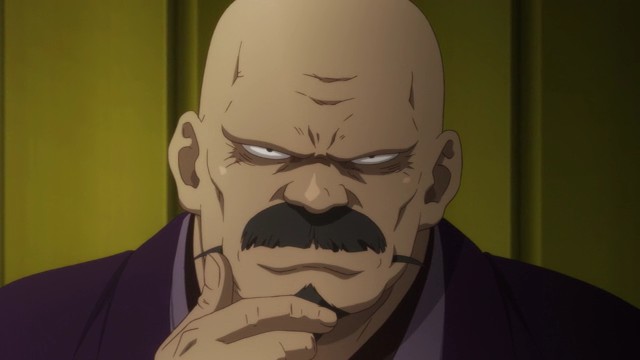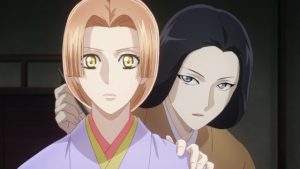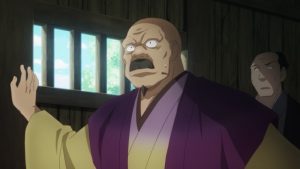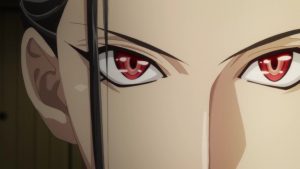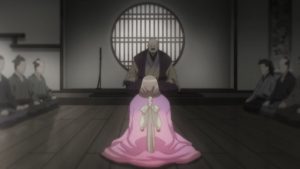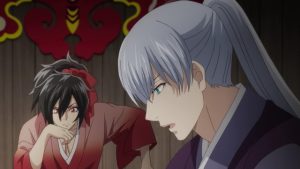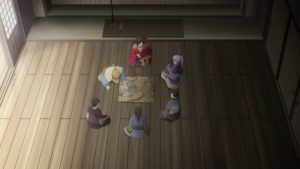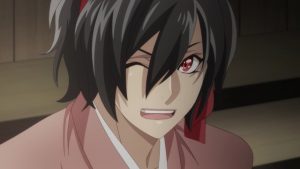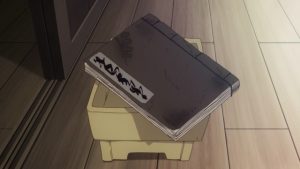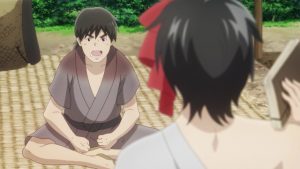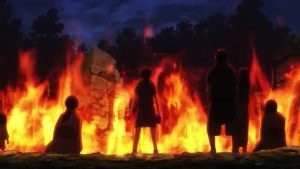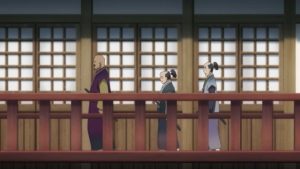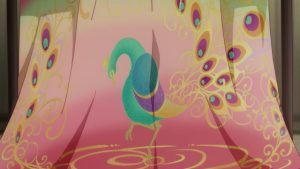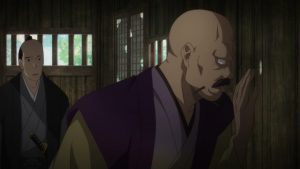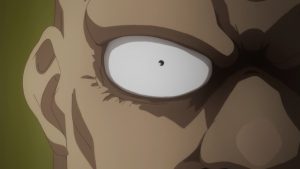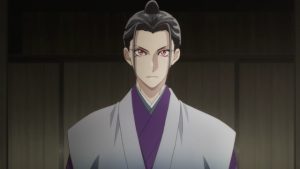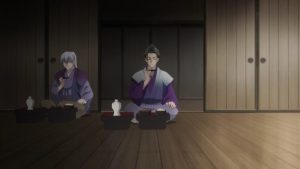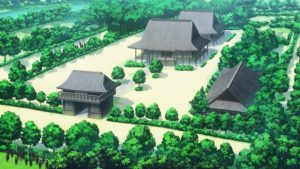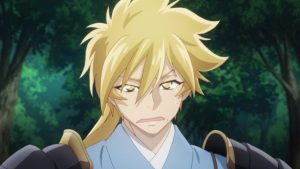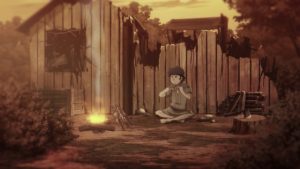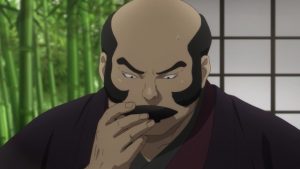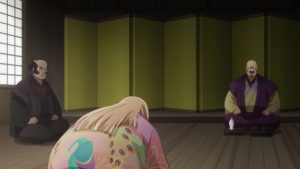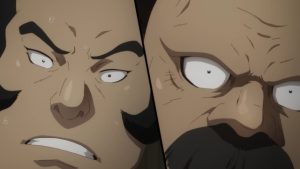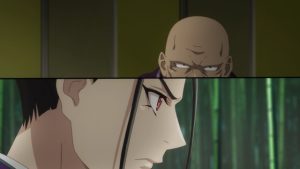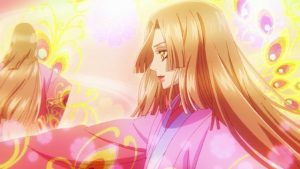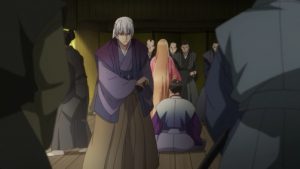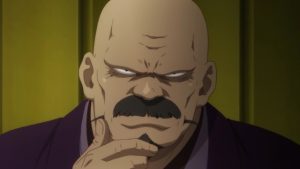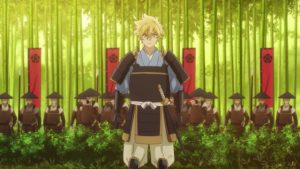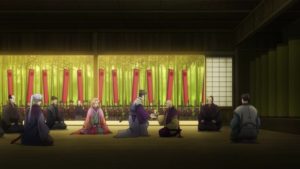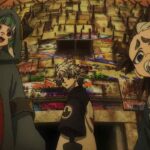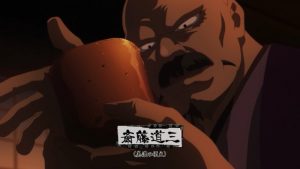 This season’s (unusually large) pool of bubble series have generally been headed in the same direction, and it’s not the one you’d want. But Kochouki: Wakaki Nobunaga is the one bucking the trend. As more hyped (which is pretty much everything) shows leak oil and cough smoke, Kochouki remains just as sober and interesting as it started. More so, in fact, as the more fanciful and self-indulgent elements have been played down in favor of genuinely thoughtful historical speculation.
This season’s (unusually large) pool of bubble series have generally been headed in the same direction, and it’s not the one you’d want. But Kochouki: Wakaki Nobunaga is the one bucking the trend. As more hyped (which is pretty much everything) shows leak oil and cough smoke, Kochouki remains just as sober and interesting as it started. More so, in fact, as the more fanciful and self-indulgent elements have been played down in favor of genuinely thoughtful historical speculation.
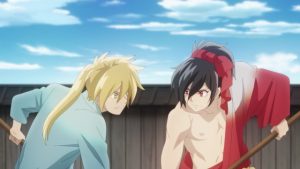 Owari’s relationship with the neighboring domain of Minoo, under the rule of Nobunaga’s father-in-law Saitou Dousan, was the crucial proving ground of Oda’s early career. The Viper was a formidable adversary, but could also be a valuable ally – it could even be argued that the young Nobunaga honed his tactical and diplomatic skills through his tap-dance with his older counterpart. When an invitation comes for a meeting with Dousan, Nobunaga can hardly say no – but he doesn’t wish to in any event, seeing the possibilities inherent in improving the two domains’ strategic relationship.
Owari’s relationship with the neighboring domain of Minoo, under the rule of Nobunaga’s father-in-law Saitou Dousan, was the crucial proving ground of Oda’s early career. The Viper was a formidable adversary, but could also be a valuable ally – it could even be argued that the young Nobunaga honed his tactical and diplomatic skills through his tap-dance with his older counterpart. When an invitation comes for a meeting with Dousan, Nobunaga can hardly say no – but he doesn’t wish to in any event, seeing the possibilities inherent in improving the two domains’ strategic relationship.
 Naturally neither side is engaging in an ounce of blind trust here, both intending to have an army present at the temple where the meeting is to take place. Oda places this duty in the hands of Maeda Toshiie, the first significant command of what will be many. Internal politics inside Minoo are a crucial element here too, as Dousan’s son Yoshitatsu sees a closer relationship between his father and Nobunaga as a threat to his own succession. There’s a rather fascinating side-story to this which Kochouki may or may not ever get to – Yoshitatsu was plagued by rumors he wasn’t Dousan’s true son (he murdered his younger brothers in 1555 just to be on the safe side) and suffered from leprosy.
Naturally neither side is engaging in an ounce of blind trust here, both intending to have an army present at the temple where the meeting is to take place. Oda places this duty in the hands of Maeda Toshiie, the first significant command of what will be many. Internal politics inside Minoo are a crucial element here too, as Dousan’s son Yoshitatsu sees a closer relationship between his father and Nobunaga as a threat to his own succession. There’s a rather fascinating side-story to this which Kochouki may or may not ever get to – Yoshitatsu was plagued by rumors he wasn’t Dousan’s true son (he murdered his younger brothers in 1555 just to be on the safe side) and suffered from leprosy.
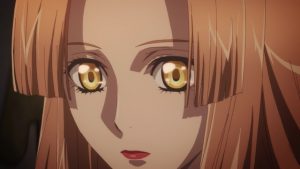 Yoshitatsu has engineered a plot to undermine the nascent alliance – he sends his sister Kichou a kimono to wear which features a peacock, a bird known to be the natural enemy of vipers (supposedly). As it turns out this viper and Nobunaga do indeed get on famously, bonding over peasant food (frogs) and a shared interest in the merchant class (Dousan – unlike Oda – grew up in said merchant class). Unfortunately for Yoshitatsu, Nobunaga is quick on the uptake and good at thinking on his feet, and manages to talk his way out of the engineered scandal – though it’s only because Toshiie arrives just in time that Yoshitatsu is unable to force through his preferred result.
Yoshitatsu has engineered a plot to undermine the nascent alliance – he sends his sister Kichou a kimono to wear which features a peacock, a bird known to be the natural enemy of vipers (supposedly). As it turns out this viper and Nobunaga do indeed get on famously, bonding over peasant food (frogs) and a shared interest in the merchant class (Dousan – unlike Oda – grew up in said merchant class). Unfortunately for Yoshitatsu, Nobunaga is quick on the uptake and good at thinking on his feet, and manages to talk his way out of the engineered scandal – though it’s only because Toshiie arrives just in time that Yoshitatsu is unable to force through his preferred result.
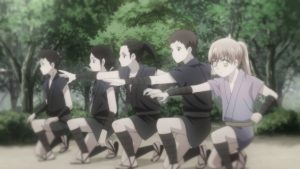 Again, much of this is surely fancy – there were no video cameras in the 16th Century and with no one chronicling these events we have no way of knowing what actually transpired. But nothing that happens in Kochouki: Wakaki Nobunaga feels out of place in the context of Nobunaga’s story – one could easily see the development of the man who aspired to unite Japan (I loved the understates scene where Nobunaga is reminded of the costs of the wars he wages) and end the Warring States period occurring much as is depicted here. If one has an interest in Japanese history this series is must-see TV, and given the paucity of serious Nobunaga anime all the more so.
Again, much of this is surely fancy – there were no video cameras in the 16th Century and with no one chronicling these events we have no way of knowing what actually transpired. But nothing that happens in Kochouki: Wakaki Nobunaga feels out of place in the context of Nobunaga’s story – one could easily see the development of the man who aspired to unite Japan (I loved the understates scene where Nobunaga is reminded of the costs of the wars he wages) and end the Warring States period occurring much as is depicted here. If one has an interest in Japanese history this series is must-see TV, and given the paucity of serious Nobunaga anime all the more so.


